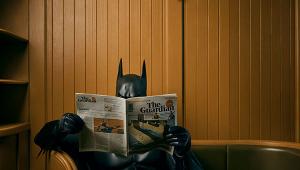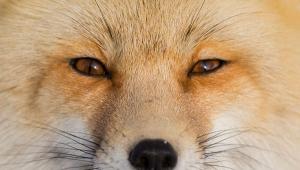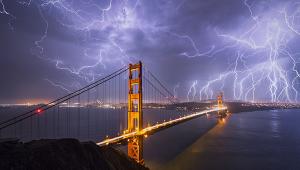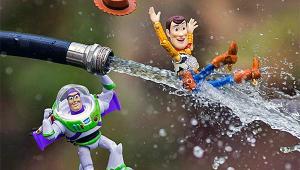War Stories: Photojournalist Lynsey Addario Has Been to Hell and Back

Lynsey Addario/ MSF/ VII Network
She’s been shot at, bombed, kidnapped, groped, and severely injured in a car accident. But when the call comes with an assignment to a dangerous part of the world, documentary photographer Lynsey Addario rarely says no.
What motivates a journalist to keep going back while risking one’s life? For Addario, “It’s a deep responsibility to the people who look at my work in newspapers and magazines. Our policy makers need to see what’s happening, and we have unique access to places where others can’t go because of security. With my years of experience and the tools I have, it would be very irresponsible for me to not tell these stories.”
Addario never imagined she would have a career in photography. When she was 13 her father gave her a Nikon FG camera and she was fascinated by the way light and the shutter could freeze a moment in time. After teaching herself the basics from an old “how to photograph in black and white” manual, Addario would sit on the roof and try to take pictures of the moon, or shoot flowers, cemeteries, and landscapes.
“I was too shy to take pictures of people,” she recalls. “One day a friend of my mother’s who was a professional photographer invited me to her darkroom and taught me how to develop and print film. I watched with wonder as the still lifes of tulips and tombstones twinkled onto the page. It was like magic.”

Lynsey Addario/Getty Images Reportage

Lynsey Addario/Corbis Saba

Lynsey Addario/Getty Images Reportage
A Unique Start
While attending the University of Wisconsin-Madison and majoring in international relations, Addario continued to photograph obsessively, especially in Europe during a semester abroad. After graduating she still craved a life of travel and decided to move to Buenos Aires to learn Spanish and explore South America. A journalist boyfriend suggested she approach the English daily newspaper, the Buenos Aires Herald, to see if she could freelance for them as a photojournalist.
At first she was told she needed to improve her Spanish, but when she kept persisting they finally gave her some assignments but nothing was ever published. Finally her big break came—Madonna was in town filming Evita, and the editors told her if she could sneak onto the set and take a photo of Madonna filming they would offer her a job.
“I pleaded with the security guards to let me in, telling them my entire career and future as a photojournalist depended on them allowing me onto the set.” Finally they relented and Addario was able to sneak into the press risers to focus on a balcony where Madonna was to appear. She was dismayed to find her Nikon FG with a 50mm lens made the balcony look like a microscopic speck. A sympathetic photographer loaned her his 500mm lens and Madonna appeared huge in her frame. The photo made the front page of the paper and Addario got the job for $10 a picture.
While living in Buenos Aires she went to see an exhibition of Sebastião Salgado’s black-and-white photographs of people around the world toiling in miserable conditions. Addario suddenly realized how a photo could tap people’s emotions and tell a story, and at that moment she knew she wanted to devote her life to photojournalism and documentary photography.
Moving back to New York City, Addario showed her clips from the Buenos Aires Herald to the local papers and the Associated Press. The newspapers put her on their stringers’ list and the AP gave her steady work right from the start.

Lynsey Addario/Getty Images Reportage

Lynsey Addario/ VII Network for Time Magazine

Lynsey Addario/Getty Images Reportage
“You would never dream of saying no to an assignment,” Addario recalls, “no matter what the time of day or what else you were doing.”
Her first official training in photography came from AP photographer and weekend editor Bebeto Matthews. “He would examine each of my photos with a loupe and taught me how to read light, about composition, and how to fill the frame of my viewfinder with the subject and important contextual information. More than anything he taught me the art of patience; to linger in a place long enough without photographing so people grew comfortable with me and the camera’s presence in order to capture the poignant moments.”
After convincing her father to advance her the same amount of money he had given her sisters for their weddings, Addario invested $10,000 for the proper camera equipment. Today her go-to cameras are a Nikon D810 and a Nikon D4. “I like the smaller size of the 810 because when working in sensitive situations I can go in more discreetly,” Addario says. “But the D4 is great if I’m shooting breaking news and have only one shot that needs to be taken very quickly.”
She jumped at the opportunity to go to India in 2000 with a family friend and was able to get work with various newspapers and the AP covering Southeast Asia. Soon a fellow journalist suggested she go to Afghanistan to photograph women living under the Taliban. This was her first trip to a hostile country, but with the help of representatives from the Comprehensive Disabled Afghans Program, a driver, and a guide and interpreter, Addario was able to travel through the countryside. She spoke with land mine victims, widows, doctors, women and families, and to her surprise, since photography was banned by the Taliban, many were willing to be photographed.
Then came the attacks of September 11, 2001. Few photographers had experience working in Afghanistan like Addario did, and she immediately flew to Pakistan to wait for the expected US invasion. She finally reached her goal of freelancing for The New York Times as the American press was obsessed with “understanding Islam and how it had allegedly fueled the attacks against America,” Addario says. She had unique access to women’s madrassas to photograph and interview devout Pakistani women, and when she realized she was getting the type of photos that weren’t appearing in other publications, a proposal she made to The New York Times Magazine was accepted.

Lynsey Addario for The New York Times

Lynsey Addario for The New York Times
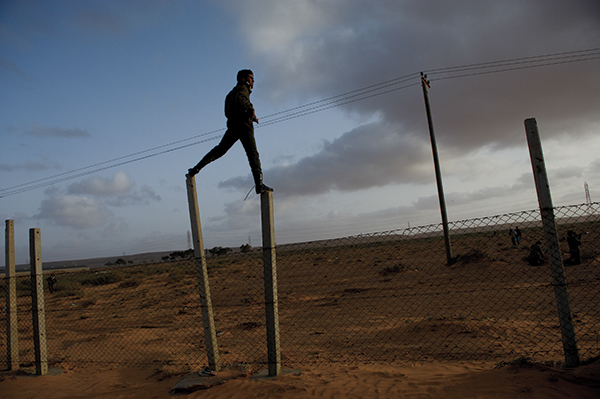
Lynsey Addario for The New York Times
In The Danger Zone
When the invasion of Iraq began in March of 2003, Addario was there to cover it. Witnessing the fall of Saddam Hussein and the discovery of thousands of bodies pulled from mass graves, she also got used to two or three bombs going off every day. Addario found herself not running away from explosions but running directly toward them. “I just wanted the lasting, indelible images of the war to sear the front pages of the newspaper so our policy makers could see the fruits of their decision to invade Iraq,” Addario says. While chasing a story about an American helicopter shot down near Ramadi, she and a New York Times reporter were kidnapped by Iraqis along a known smugglers’ route. Telling them she was Italian and the reporter Greek, they were eventually released unharmed. At that point Addario decided to make out her will when she got home.
After covering the civil wars in Darfur and the Congo for several years, in 2007 Addario and New York Times Magazine reporter Elizabeth Rubin decided to find an embed experience with American troops in Afghanistan. As more and more lives were being lost on both sides, they felt the need to document what had gone wrong. They chose the Korengal Valley, one of the most dangerous places in the country near the Pakistan border. On daily six-hour patrols over terrain that was practically vertical in thin mountain air, Addario and Rubin managed to keep up with the troops. (It helps that Addario runs six miles a day whenever she is home.) On one patrol she took off her helmet and left her camera in order to climb 40 feet to hide behind a fallen tree to pee. “Before I’d even unbuttoned my pants I heard the familiar snap of AK-47 rounds—the gun of choice for the Taliban.”
Addario managed to survive the attack by rolling back down the mountain to where the others were, but two soldiers were injured and one died in the battle.

Lynsey Addario/ VII Network

Lynsey Addario/Getty Images Reportage
Facing Death In Libya
Many of Addario’s colleagues had been covering the Arab Spring uprisings in North Africa in 2011, and she knew how historic these events would come to be. Three weeks into her stay in Libya, Addario and three other journalists were kidnapped by Muammar el-Qaddafi’s soldiers. In public speeches Qaddafi had declared that all journalists were spies and terrorists, and if found they would be detained or killed. With hands and feet bound and eyes blindfolded, Addario was groped repeatedly and the men beaten as they were moved from truck to truck. At one point a soldier told her, “You will die tonight.” Fortunately the group was turned over to the Libyan Foreign Ministry where the treatment was better, and thanks to pressure from The New York Times and with the help of the Turkish Embassy, the group was released six days later.
“Photojournalism is a very selfish profession,” Addario says. “The hardest part about what happened to us in Libya is what we put our loved ones through—more than what happened to us. The whole time we were detained, I think our main concern was that our families didn’t know we were alive. And we knew we would be hurting them.”
A New Life In London
Today Addario lives with her husband Paul de Bendern and their 4-year-old son Lukas in London, and is a lot more selective about the assignments she takes. “I don’t work on the front line as much and I ask a lot of questions. If I’m going into a war zone, I ask if there’s a reason why I personally need to go and how I can contribute to that story.”
She recently completed a story on women in Saudi Arabia to be published in National Geographic. Addario had always thought she and her cameras would “grow old together alone in some remote corner of the planet,” but de Bendern is very supportive of her career and understands the need for long absences from home.
For those considering a career in photojournalism, Addario says you first need to realize it’s a lot of hard work and it takes a lot of persistence. “You don’t just graduate from college and start working for National Geographic. You have to be very passionate about storytelling and care about other people. Whether you freelance or work for a newspaper or agency, try to consistently be out there photographing to improve your style and your way of storytelling. And above all, when you are first starting out and an assignment comes in, never turn it down!”
In 2009, Lynsey Addario shared a Pulitzer Prize for International Reporting with New York Times staff members and was also given a MacArthur Fellowship that year. Her photography regularly appears in The New York Times, National Geographic, and Time. Additional photographs can be viewed on her website, lynseyaddario.com, and in her book, It’s What I Do: A Photographer’s Life of Love and War.
- Log in or register to post comments







